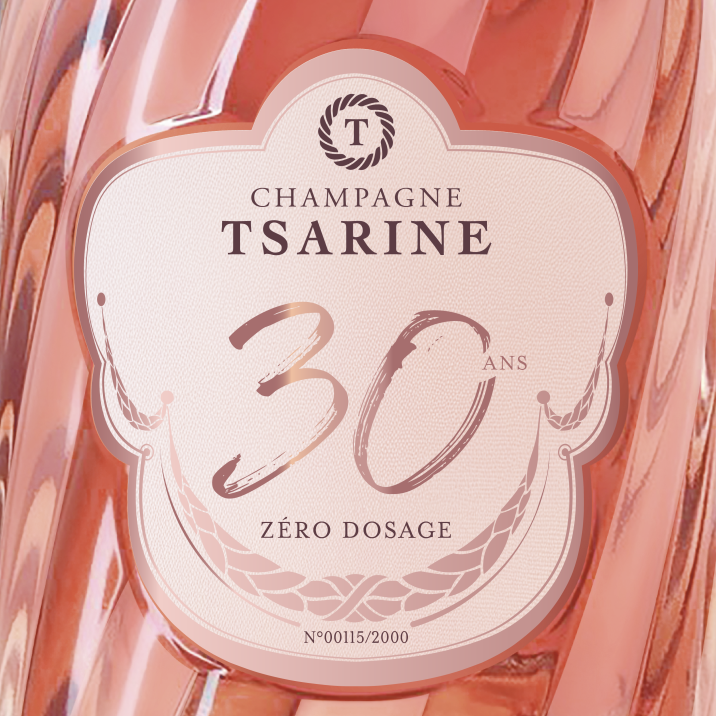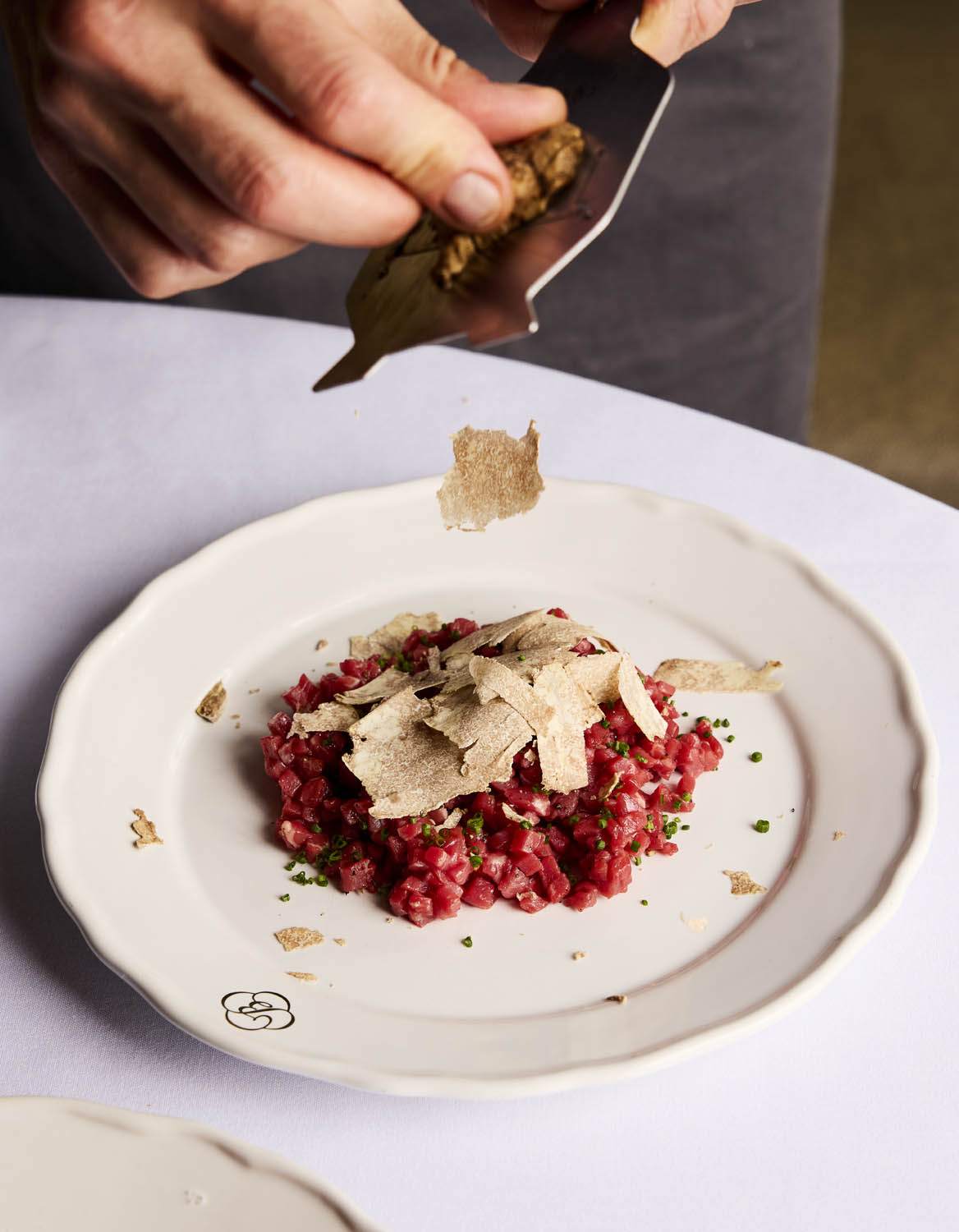Wine lists: the bigger the better?
While good things are supposed to come in small packages, when it comes to wine lists, a number of the top sommeliers in London live by ‘the bigger the better’ mantra, writes Lucy Shaw.
The London dining scene is becoming increasingly polarised. At one end you have the casual dining venues where the menu often changes daily, depending on what seasonal produce the chef has managed to get their hands on. To complement and keep up with the ever-evolving menus, wine lists at these dynamic, seasonally-led sites are shrinking, often down to a single sheet, so the wines on these carousel-like menus can jump on and off the list, depending on the time of the year and the food being served.
It makes perfect sense to go big on rosé, Beaujolais and other lighter sips during the summer then bring out the warming Châteauneufs and Californian Cabs when the mercury dips. Then there are the high-end venues with mammoth wine lists that cater to the finickiest of oenophiles.
Size is a point of pride for these sites, and being well endowed in the wine department is a must once you get into two- and three-Michelin-star territory. While these larger lists go against the grain of the current drinking and dining trends in London, a well-curated larger list can be a thing of beauty, and a treasure trove for a wine lover seeking a special drop that may not be listed anywhere else in town.
While a number of London restaurants, such as The Greenhouse in Mayfair and Clos Maggiore in Covent Garden have quietly been championing larger lists for years, the opening of private members’ club 67 Pall Mall in St James’s in December 2015 changed London’s wine game for good.
Housed in a Grade II-listed building designed by Sir Edwin Lutyens that once served as the St James’s branch of Hambros Bank, the club is the brainchild of former city trader Grant Ashton, who launched the ambitious venture after becoming tired of inflated restaurant mark-ups.
“I got fed up of being mugged by punitive London mark-ups on fine wine. Like a lot of people, I’d stopped drinking seriously good wine in restaurants. I was no longer prepared to pay the nonsensical prices that were being asked,” Ashton said at the time of the launch.
He managed to raise £8 million from 87 investors to turn his wine-club dream into a reality, which has been a labour of love since the beginning, with Ashton mucking in with the number crunching and even the loo cleaning to get the project off the ground.
Now in full swing, and with 18 sommeliers, headed by Ronan Sayburn MS, the club has given Ashton the perfect platform through which to sell bottles from his ever-expanding personal wine collection.
The club cradles a staggering 26,000 bottles of wine, while the list, presented to members on iPads, boasts 4,300 references, 750 of which are available by the glass via Coravin, including Krug Grande Cuvée, Lafite 1947 and Olivier Bernstein Charmes-Chambertin 2013. Membership costs £1,500 a year plus an initial £1,500 joining fee. Since opening, 67 Pall Mall has amassed 3,200 members, 35% of which are women, though Ashton is aiming for an even male/female split. He also wants to recruit more under-25s into the fold.
Wines start at £40 a bottle and spike at £16,882 for a bottle of Domaine de la Romanée-Conti, Romanée-Conti 1993, while glasses run the gamut from £7 to £667 for a taste of cult California label Sine Qua Non 1995. With a 70/30 Old to New World bias, Burgundy is the crown jewel of the list, with more than 450 references available, including drops from Armand Rousseau, Dujac, Domaine Ponsot, George Roumier, Anne Gros, and, of course, Romanée-Conti.
Grant is keen to have the largest wine list in the country, if not the world,” Franklin says, though he admits that the club is “fast running out of space” for its growing wine collection.
To keep things running smoothly, the club advises members to call ahead if they have their heart set on a particular bottle either from the list or their personal collection, so that it can be retrieved from the depths of the cellar before they arrive.
The success of 67 Pall Mall has spawned a number of competitors, including Oswald’s; Robin Birley’s new private members’ club in Mayfair that champions the “glorification of wine”, which features interiors inspired by the Hall of Mirrors at Versailles and Krug as its house Champagne.
Also new to the game is Ten Trinity Square Private Club at The Four Seasons in Tower Hill. It boasts a Château Latour ‘discovery room’, filled with double magnums, Jeroboams and imperials of the revered first growth dating back to the 1930s, winking at you from behind glass, and refined food by multi-Michelin-starred chef Anne-Sophie Pic.
It looks like Ashton might have his work cut out if he wants to boast the biggest wine list in London because Russian tech billionaire Yevgeny Chichvarkin – owner of Hedonism, a wine lover’s liquid dream in Mayfair – has just opened Hide, overlooking Green Park, where every one of Hedonism’s 6,800 labels is available to order from the wine list.
Set over three floors – Below, Ground and Above – the 170-seater venue is home to a tasting menu-driven fine dining restaurant run by Ollie Dabbous, where you’ll find the likes of: roast King crab, camomile honey and salted butter; raw tuna, prickly ash and Exmoor caviar; and roast goose with birch sap and kale on the menu.
Keen for the wines to be as impressive as Dabbous’ famed food, Chichvarkin has plucked master sommelier Piotr Pietras from Launceston Place to head a wine team of 16 sommeliers.
Partner Content
Bottles can be biked throughout the night from Hedonism to the restaurant in as little as 12 minutes. “There are staff working at the shop until midnight, so ordering a bottle is never an issue,” says Pietras, who has devised three wine-pairing options to complement Dabbous’ eight-course tasting menu: Classic, priced at £65; the £115 Discovery pairing; and the top-drawer Hedonistic pairing menu, which costs £295 for the wines alone.
But what wines they are. Those willing to splash the cash will be treated to an enviable selection of elixirs, including: the 1996 vintage of Château d’Yqeum’s dry white, ‘Y’ de Yquem; Vieux Château Certan 1982; and the 1992 vintage of cult California Cabernet Harlan Estate, in a hat tip to Chichvarkin’s love of wines from the Golden State.
The Discovery menu features more off-piste wines, such as Envinate’s saline Palo Blanco 2016, made from century-old Listan Blanco vines planted in black sandy soils in Tenerife, with a junmai daiginjo saké and a Swedish ice cider thrown in for good measure.
Interestingly, Hide has opted not to work with Coravin and will instead offer 50 wines by the glass in the conventional way, as Pietras wants to be able to guarantee that every wine poured tastes as the winemaker intended.
“We want our customers to be free of doubts, and I don’t believe that Coravin can fully provide us with the quality that we’re looking for after three to six weeks,” he says.
Instead, Hide boasts one of London’s largest selections of half bottles, taking in: Krug Rosé; Charles Heidsieck 1955; J.J. Prüm Riesling Auslese 2000; Maycamas Chardonnay 1999; Château Margaux 2005; Gaja Barbaresco 2011; and Ridge Monte Bello 2014. Aiming to provide wine lovers with some of the smallest mark-ups in town,
Hide bucks the tradition of its Mayfair postcode and charges just £30 corkage on top of the wine’s retail price at Hedonism, and £60 corkage for magnums. Like 67 Pall Mall, the list is presented to diners on iPads, making its 6,800 bottles easier to scroll through. There is also a core list of 450 bottles that sleep in the restaurant’s cellar, where guests are free to roam and gawp at the liquid library.
“Customers can pre-order their chosen bottle and have it decanted up to two days in advance, which I’d recommend for some of our richer wines, as they need time to breathe,” advises Pietras, who reveals that the core list at Hide acts as a greatest hits collection of some of Hedonism’s rarest and most collectible wines, alongside a selection of more affordable drops and a clutch of quirky offerings from lesser-known wine countries, such as Greece, Slovenia and Uruguay.
Bordeaux, but it’s the Rhône that gets Lecoufle’s heart racing. To get around the recent price hikes in Burgundy, Lecoufle is seeking out wines from the region’s smaller and lesser-known appellations, but believes diners will soon refuse to pay the eye-watering prices Burgundy commands.
“It’s going to get increasingly hard to be able to list Burgundy at prices that customers can afford. People are going to start feeling taken advantage of, and the wines will become a hard sell,” he predicts. For Elvis Ziakos, The Greenhouse’s king of wine, a wine list is something to nurture and grow so that with each sommelier that inherits it, it becomes bigger, better and more interesting.
With this in mind, Ziakos is not only buying wines for the list he presents to customers, but for future incarnations of the list.
“I inherited the list from Ronan Sayburn (now at 67 Pall Mall), and, like him, am keen to invest in its future, so have bought wines from the great vintages of Bordeaux, Burgundy and Barolo, like 2009 and 2010, which will be stored in bond until they’re ready to drink,” he says.
If he could, Ziakos would expand his 3,500 bottle list, but as the two-Mchelin-starred restaurant resides in Mayfair, and he doesn’t have space for more wine.
The list’s long length allows Desport to take a deep dive into specific regions and grape varieties, so he’s able to offer white Burgundies in all manner of guises, from steely Chablis to opulent Meursaults, and can show off Chardonnay’s versatility in the process.
The average bottle spend at the restaurant is a healthy £200, and the majority of diners actively seek out Desport and his team’s recommendations. “Keeping the list up to date involves a lot of work, but I’m very emotionally attached to it. I’m forever adding to it, so it’s constantly evolving, which keeps things exciting,” says Desport. And that’s the joy of a carefully curated larger list – just because it’s big doesn’t mean that the majority of the wines will sit in the cellar gathering dust.
If correctly presented and savvily sold, a large list keeps both the sommeliers and diners engaged and enthused. When it comes to wine, choice and diversity can only be a good thing, and the introduction of iPads is making larger lists easier to navigate and more fun to browse through.
The larger the list the harder the sommelier has to work to maintain it, but this seems a small price to pay for the pride and pleasure it brings. While sommeliers at casual dining venues are starting to shun big lists in favour of concise seasonal offerings, for those in charge of the lists at London’s top fine dining restaurants and wine-focused members’ clubs, big is beautiful.





During the seeing your post i am saw your wine bottles and wine decanters. I really like your wine decanters. It’s my passion to visit new bars. i should come bar soon for enjoy wine.
Why this obsession with huge London wine lists? Try taking a look at our award-winning wine selection at the Park House Restaurant & Fine Wine Bar in Cardiff, South Wales. Go to http://www.parkhouserestaurant.co.uk